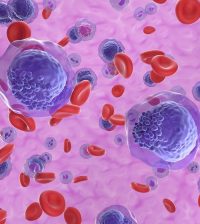- Navigating Your Midlife Crisis: Embracing New Possibilities
- City Raccoons Showing Signs of Domestication
- Mapping the Exposome: Science Broadens Focus to Environmental Disease Triggers
- One Week Less on Social Media Linked to Better Mental Health
- Your Brain Changes in Stages as You Age, Study Finds
- Some Suicide Victims Show No Typical Warning Signs, Study Finds
- ByHeart Formula Faces Lawsuits After Babies Sickened With Botulism
- Switch to Vegan Diet Could Cut Your Greenhouse Gas Emissions in Half
- Regular Bedtime Does Wonders for Blood Pressure
- Dining Alone Could Mean Worse Nutrition for Seniors
To Lose Weight, Start With Dairy Swaps

Losing weight comes down to simple arithmetic: Eat fewer calories than you burn off.
Here’s a good way you can accomplish this without going hungry.
Switch out high-calorie foods for low-calorie options to cut calories without cutting portion sizes. Dairy food is a good place to start, according to the U.S. Department of Agriculture.
If you’re still using whole milk and cream, make gradual changes to lower-fat versions. Start by switching from whole milk to 2 percent milk for your coffee, on your cereal and in recipes. Then take the next step down to 1 percent milk and, eventually, to fat-free or skim milk. You can make similar switches with other dairy products, like yogurt and cottage cheese.
Mix in your own fresh fruit or a few drops of vanilla extract to a serving of no-fat plain Greek yogurt to make you forget about higher-calorie choices. You’ll get twice the protein of regular yogurts without the added sugar (and calories) of flavored varieties.
Are you craving cheese? Choose types that are naturally lower in fat, like feta, string, goat and ricotta cheese. Also try reduced-fat versions of your favorites, like cheddar.
Milk is a great source of protein and other nutrients — like calcium — needed for bone health. And it’s usually fortified with vitamin D, essential to maximizing that calcium.
The bottom line? Keep the dairy, but ditch the fat.
More information
To learn more, visit the U.S. Department of Agriculture.
Source: HealthDay
Copyright © 2025 HealthDay. All rights reserved.










